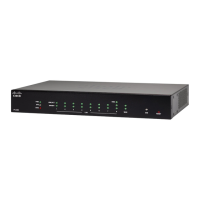CHAPTER 10
VPN
A Virtual Private Network (VPN) is used to establish an encrypted connection over a less secure network.
VPN ensures the appropriate level of security to the connected systems when the underlying network
infrastructure alone cannot provide it. A tunnel is established as a private network that can send data securely
by using industry-standard encryption and authentication techniques to secure the data sent.
A secure virtual private network (VPN) connection between two endpoints is known as an IP tunnel. The
tunnel is created by an encapsulation technique, which encapsulates the data inside a known protocol (IP) that
is agreed upon by the two end points. The tunnel creates a virtual circuit-like between the two endpoints and
makes the connection appear like a dedicated connection even though it spans over the Internet infrastructure.
A remote-access VPN usually relies on either IPSec or SSL to secure the connection. VPNs provide Layer 2
access to the target network; these require a tunneling protocol such as PPTP or L2TP running across the base
IPSec connection. The IPSec VPN supports site-to-site VPN for a gateway-to-gateway tunnel and
client-to-server VPN for host-to-gateway tunnel. For example, a user can configure a VPN tunnel at a branch-site
to connect to the router at corporate-site, so that the branch-site can securely access corporate network. The
client to server VPN is useful when connecting from Laptop/PC from home to a corporate network through
VPN server.
This section describes the device's VPN features and contains the following topics:
• VPN Setup Wizard, on page 89
• IPSec VPN, on page 91
• OpenVPN, on page 99
• PPTP Server, on page 100
• GRE Tunnel, on page 101
• VPN Passthrough, on page 101
• Resource Allocation, on page 102
VPN Setup Wizard
A Virtual Private Network (VPN) is used to establish an encrypted connection over a less secure network.
VPN ensures the appropriate level of security to the connected systems when the underlying network
infrastructure alone cannot provide it. A tunnel is established as a private network that can send data securely
by using industry-standard encryption and authentication techniques to secure the data sent. A remote-access
VPN usually relies on either IPSec or SSL to secure the connection. VPNs provide Layer 2 access to the target
network; these require a tunneling protocol such as PPTP or L2TP running across the base IPSec connection.
The IPSec VPN supports site-to-site VPN for a gateway-to-gateway tunnel and client-to-server VPN for
RV260x Administration Guide
89

